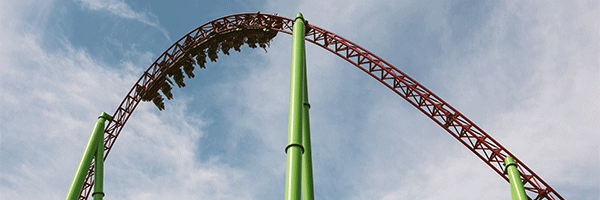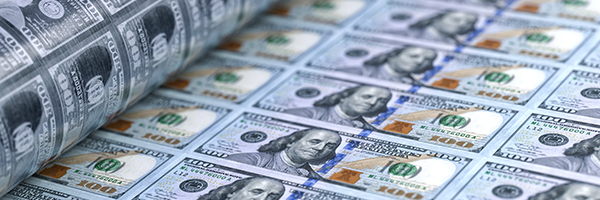Morning Briefing

October 3, 2024 | Daily JAM, Morning Briefing, Short Term |
Total assets under management in U.S. money-market funds rose by $38.7 billion in the week week ended October 2, according to the latest Investment Company Institute data released on Thursday. The increase puts total assets at a record $6.46 trillion, and caps the biggest quarter of inflows since the March 2023 banking crisis. The old record was set when the collapse of Silicon Valley Bank and other lenders sent a flood of cash into money-market funds as the Federal Reserve raised rates. What’s odd now is that the Federal Reserve is cutting interest rates and the financial system doesn’t seem particularly stressed.

October 2, 2024 | Daily JAM, Morning Briefing, Short Term |
What’s amazing to me right now is how complacent Wall Street is about the prospects for a wider regional war in the Middle East. Which could include an attack by Israel on Iran’s nuclear facilities.On a day when Israel vowed to retaliate against a barrage from Iran that rained down missiles on Israel’s Iron Dome defense, West Texas Intermediate oil rose by just 0.39% to $70.10 a barrel. International benchmark Brent crude was ahead just 1.43% to 74.61.

September 29, 2024 | Daily JAM, Morning Briefing |
We’re looking at a huge week of economic data that will support or disturb the current coin-flip odds of a 25-basis-point/50-basis-point cut when the Federal Reserve meets on November 7. Let’s start with the week’s Big Guy, the September jobs numbers due on Friday.

September 27, 2024 | Daily JAM, Morning Briefing |
The Fed’s preferred inflation gauge, the Personal Consumption Expenditures (PCE) index, rose at a slower pace than expected on a monthly basis in August. The core PCE, which strips out the cost of food and energy, rose 0.1% from the prior month during August, below Wall Street’s expectations for 0.2% and the 0.2% reading seen in July.

September 26, 2024 | Daily JAM, Morning Briefing |
The Bureau of Economic Analysis’s third estimate of second quarter US gross domestic product (GDP) was unchanged from the second estimate which had shown 3% annualized growth. Economists had estimated the reading to show annualized growth of 2.9%. Add in a separate report on initial claims for unemployment the Labor Department that showed 218,000 new claims for unemployment were filed in the week ending September 21–Wall Street had been expecting 223,000 new claims for the week–and the data clearly show that the economy is, as Fed chair Jerome Powell said last week when the Fed cut interest rates, in good shape.

September 25, 2024 | Daily JAM, Morning Briefing, Short Term |
Goldman Sachs’ consumer bank, Marcus, has reduced the rate on its high-yield savings account following the Federal Reserve’s interest rate cut in more than four years.
Marcus flagship offering now has a 4.25% annual percentage yield, down from 4.4%. I think this is just the canary in a coal mine for yield on income products.

September 24, 2024 | Daily JAM, Dividend Income, Morning Briefing, SCCO, Short Term, Top 50 Stocks |
There was a whiff of panic to the big moves by the People’s Bank today.China’s central bank cut a key short-term interest rate and announced plans to reduce the reserve ratio, the amount of money banks must hold in reserve, to the lowest level since at least 2018. This marked the first time reductions to both measures were revealed on the same day since at least 2015. And that wasn’t all.

September 23, 2024 | Daily JAM, Morning Briefing, Short Term |
I understand why no one wants to get off the rally bus. Last week’s gains pushed the Standard & Poor’s 500’s total return for 2024 above 20% again. The index jumped 1.7% on Thursday, putting in its 39th record close of the year. Both stocks and Treasuries are headed for a fifth straight month of gains. But anyone expecting the S&P 500 to build on its year-to-date gain should consider that Wall Street’s own strategists already see the upside exhausted.

September 19, 2024 | Daily JAM, Jubak Picks, Morning Briefing, Short Term, Top 50 Stocks |
It’s not just that stocks soared Thursday, September 19 with the Standard & Poor’s 500 climbing 1.7% to set its 39th record in 2024. It’s what stocks topped the leader board in the advance and what stocks lagged.

September 19, 2024 | Daily JAM, Morning Briefing, Short Term |
The number of Americans filing new applications for unemployment benefits dropped to a four-month low last week. Initial claims for state unemployment benefits dropped 12,000 to a seasonally adjusted 219,000 for the week ended September 14. That’s the lowest level since the middle of May, the Labor Department said on Thursday. Economists polled by Reuters had forecast 230,000 claims for the latest week. And stocks soared.
September 18, 2024 | Daily JAM, Morning Briefing, Short Term |
The Federal Reserve lowered its benchmark interest rate by 50 basis points Wednesday. The vote for a 50 basis point cut was 11-1 with the only negative vote–for a 25 basis point cut rather than 50–the first dissent in the Jerome Powell era. The Fed’s dot plot showed a narrow majority, 10 of 19 Fed officials, favoring at least an additional half-point in rate cuts at Fed’s two remaining 2024 meetings. The Federal Open Market Committee to lower the federal funds rate to a range of 4.75% to 5%, after holding it for more than a year at its highest level in two decades. It was the Fed’s first rate cut in more than four years.

September 16, 2024 | Daily JAM, Long Term, Morning Briefing, NVDA, Volatility |
I think of Nvidia (NVDA) as this market’s warning indicator; it’s the canary in a coal mine; the bird that will die first if dangerous gases start to build up. So, yes, it’s important that Nvidia shares plunged from $134.91 on July 10 to $98.91 on August 7. And again from $128.83 on August 28 to $102.83 on September 6. But the shares are up again–15.83% last week–to $116.78 This canary seems to be sending a rather more complicated message than “Look I’m dead! See my feet in the air?” What’s the message, though?













